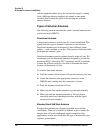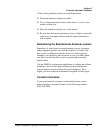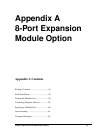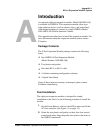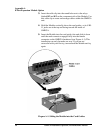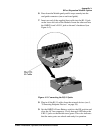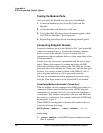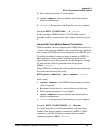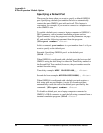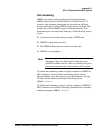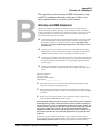
Appendix A
8-Port Expansion Module Option
58 OMEGA Installation, Operation, and Maintenance Manual
Testing the Module Ports
After you install the Module, test each port on the Module:
1.
Connect a handset to one of the RJ-11 jacks on the
Module.
2.
Lift the handset and listen for a dial tone.
3.
Verify that the LED above the jack remains green, while
the LEDs for the other 7 ports turn red.
4.
Repeat this procedure for the remaining Module ports.
Connecting Endpoint Devices
Connect an endpoint device to the Module’s RJ-11 jack labeled
J1
(which corresponds to port 1). Connect the remaining endpoint
devices to any of the other RJ-11 jacks. A remote host can
communicate with one endpoint device at a time using either of the
following methods.
In both cases, the connection is maintained until the host or meter
ends it. When a host connects to an endpoint device, the LED
above the port being called remains green. The LEDs for all other
ports turn red to show that they are “locked out” until the host goes
on-hook. You can also connect a phone to the OMEGA’s RJ-11
jack to originate and receive calls as you would normally.
The host can communicate with an endpoint device in two ways:
using the Time Delay method or the Second Dial Tone method.
Time Delay Method (Automatic Connection)
With this method, the host computer calls OMEGA and waits for a
connection. When connected, the host sends a DTMF digit that
corresponds to a number from 1 to 8 on a touch-tone telephone or
via a modem. This number corresponds to the port with which the
host wants to communicate. For example, sending the DTMF digit
4
corresponds to port 4.
When OMEGA is configured for the time delay method, the host
issues the following dial string:
ATDT<
phone number
>,,,<
port number
>
<Enter>
In this string:
c
<
phone number
>
is the OMEGA phone number (and area
code, if required).



